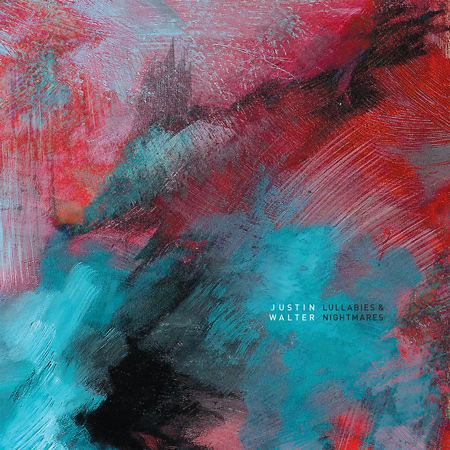 The murky depths of low-range tones are like subconscious murmurs. This kind of music speaks in so much depth, more than the imaginary space that an echo brings, or "atmospheres" built with samples and noise. Justin Walter's music is bassy, perplexing and intimate. Lullabies And Nightmares is an album which plays heavily with literal and imagined distances, where contact is always out of reach, always obscured by invariably plump electronic tones and the warmth of his ideas are paired with mechanical rigidity. It helps, too, that he has created a suite of beautiful melodies to mess with.
The murky depths of low-range tones are like subconscious murmurs. This kind of music speaks in so much depth, more than the imaginary space that an echo brings, or "atmospheres" built with samples and noise. Justin Walter's music is bassy, perplexing and intimate. Lullabies And Nightmares is an album which plays heavily with literal and imagined distances, where contact is always out of reach, always obscured by invariably plump electronic tones and the warmth of his ideas are paired with mechanical rigidity. It helps, too, that he has created a suite of beautiful melodies to mess with.
When the trumpet enters on the title track, it is probably the most distinct tone likely to be heard on the album. Lullabies And Nightmares, like its title suggests, is an argument for the fluid romance of dreams and the narcotic sensations of sleep. Walter knows exactly where that sweet spot lies, placing gorgeous synth patches, live drums, and a consistent bass drone behind walls of watery obfuscation. It plays to the strengths of kosmische music in actual melody, but Justin continuously refuses to cave in to crisp reality. Aside from the title track's comparative definition, this is a nocturnal, reclusive work of art best suited for exploring caves at night or catching fireflies.
This is usually to Walter's advantage, particularly on the first half of the record. "Mind Shapes," "Dream Weaving," and the miniature "Awakening" (perhaps a prelude to the aforementioned "Lullabies And Nightmares") are fantastic moments of music, appropriating some of early electronica's arpeggios and pentatonic melodies with impropriety, turning them into disjointed bursts and loops of something sort of resembling a post-rock jam session (underwater, of course). This mood returns on "The Way Of Five," as a shattered metallic creak illuminates Justin's melodies like rusted ships singing along. "Plastic People," a longer and more conventional moment of clarity that weaves glassy percussion, electric piano blips and mellifluous trumpet into a fully realized design, is the album's late highlight. "I Saw Your Face" ends on more inexact terms, a formless kind of sound art, grasping uncertainly around hissing synths and muddy thumping that might have once been a drum beat.
It is difficult to pull off this kind of vague-yet-warm electronic music so well, but it is also as difficult to be convinced of its depth and complexity. Justin Walter's contributions make for a truly engaging listen, and it is all the more flattering of his virtuosity to know that he improvised these. The fragmented and curious creations of a truly gifted performer, the nicest meditations on a unique theme.
samples:
 
Read More

